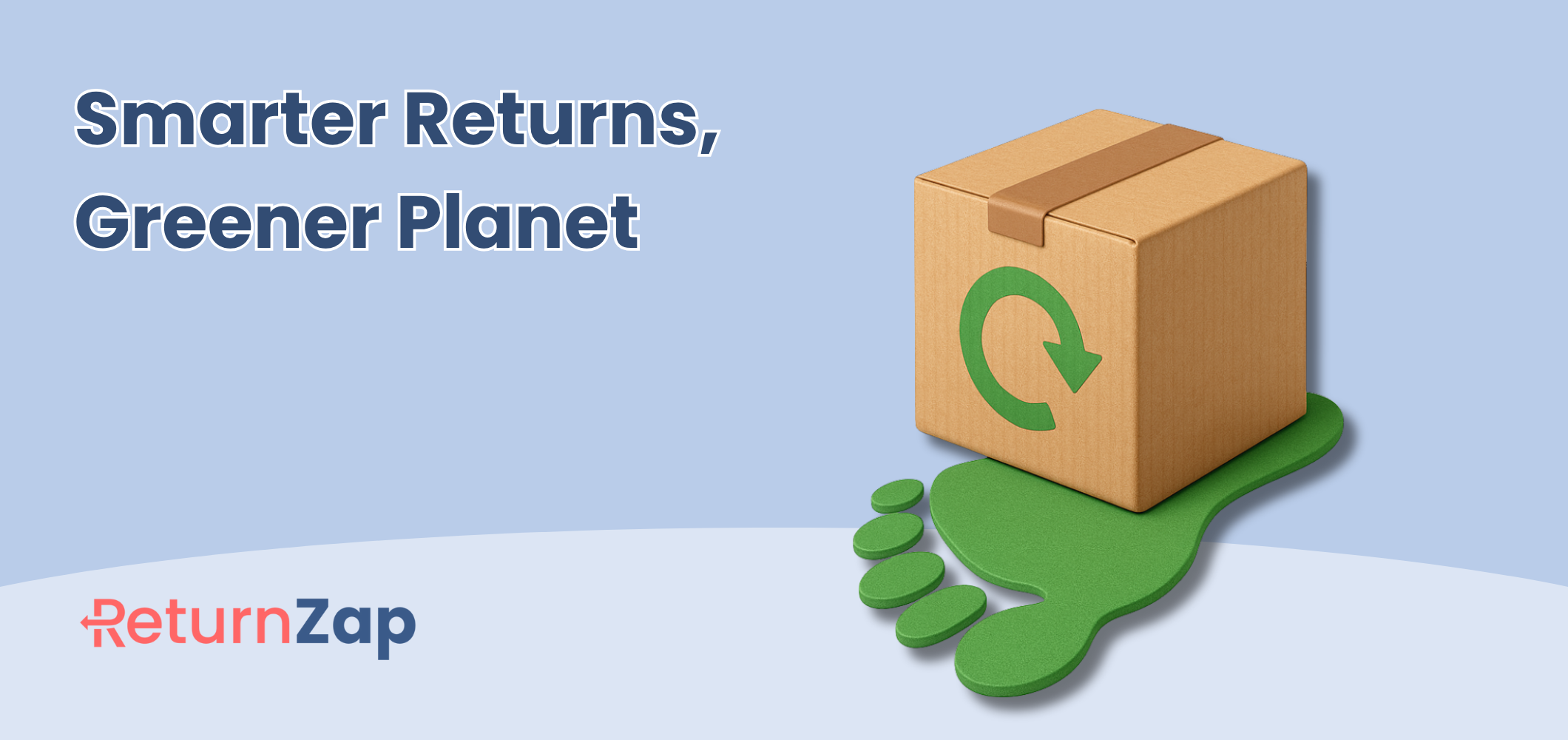Streamlining Your Australia Post Shopify Returns Process
.png)
Statistics show that around 20 to 30% of all products ordered online are returned, compared to 8 to 9% in brick-and-mortar stores. This means that handling those product returns is a critical component of providing excellent customer service online. A speedier and more effortless return process results in happier customers who are more likely to become repeat customers and promote your store via word-of-mouth marketing.
Now, while there are many ways to handle returns in a Shopify store, in Australia, Australia Post is often the go-to. But, if you’re not familiar with this service or how to carry out these returns in relation to your Shopify store, don’t panic.
I’m here to help break down this process for you and how a returns management app can help you. Plus, I’ll throw in details on what to look for when choosing an app to take care of your Australia Post Shopify returns.
Breaking Down the Shopify and Australia Post Integration
Shopify and Australia Post work together seamlessly to ensure your customers get their purchases delivered on time and, if needed, returned with as little hassle as possible. This partnership provides a robust system that allows store owners to have full control over the shipping process.
To set this postal service up as a shipping option, all you have to do is:
- First, go to your Shopify 'Admin' panel and click on 'Settings' and then 'Shipping and Delivery.'
- In the 'Custom Shipping Rates' section, click 'Add Rate.'
- Fill in the necessary fields, such as 'Name' - which could be "Australia Post," and 'Price.'
- If you have contract rates from Australia Post, you can also choose to integrate this with Shopify using third-party apps such as 'Parcelify.'
Once you've done this, your customers can now select Australia Post as a shipping method when they check out.
Access to Australia Post Shipping Labels
Not only can you integrate your Shopify with Australia Post, but you can also generate, buy, and print Australia Post shipping labels directly from your Shopify admin. This makes the shipping process quicker as you don’t have to manually enter any information into the Australia Post system.
When a customer places an order and selects Australia Post as their preferred courier, you can easily buy and print the shipping label. Here's how:
- After an order is placed, go to the 'Orders' section of your Shopify admin.
- Choose the order you want to fulfill and click 'Create Shipping Label.'
- A new window will pop up where you can review and adjust details as needed. You can then ‘Buy’ the label.
- After purchasing, simply print the label and attach it to the package.
This process makes it easier to fulfill orders with accuracy and speed, resulting in happier and more satisfied customers.
So, whether you're a growing startup or a full-scale operation, integrating Shopify with Australia Post is a smart move. It simplifies the shipping process, leaves less room for errors, and provides a better shopping experience for your customers.
Processing Shopify Returns with Australia Post
We’ve taken a quick look at the Australia Post and Shopify integration in general. But what about returns?
To process Shopify returns using Australia Post, you need to follow the below steps:
- Verify that the return falls within your current return policy.
- Mark the order as pending return on your Shopify dashboard.
- Then, inform the customer of the approval and provide them with a choice of reusing the original packaging or obtaining a return satchel from any Australia Post Office.
- Generate a return label on the Australia Post platform. Here, you put your business as the receiver and the customer as the sender.
- Use Australia Post's tracking tool to follow it and ensure it makes its way back to you.
- Upon receiving the returned item, mark it as 'returned' on your Shopify dashboard and then decide whether you will provide a refund, exchange, or store credit as per your stated return policy.
Now, while these are the steps for processing Australia Post Shopify returns, you’ve still got to be aware that the steps above require manual effort. If you're aiming for automation, you might want to consider using a returns management app for added convenience.
Importance of Return Management Apps
As an e-commerce business owner, one of the key areas that often requires extra attention is the management of return products. After all, when your primary interaction with customers occurs online, maintaining a smooth and effortless return procedure can significantly enhance your customers' experiences and, in turn, build your brand reputation.
Integrating a return management app with your Shopify store can simplify your returns process, particularly when using Australia Post for your deliveries. A well-designed app can organize every facet of managing returns, encompassing the initial customer request all the way through to processing the returned item.
Let me break down a couple of the reasons why one of these apps is so important.
Saves Time
They make it easy for your customers to initiate a return request by providing an intuitive, user-friendly interface. Once the request is made, you'll be alerted, and from there, you can monitor and manage the progress directly from the app. This process saves you and your team valuable time and frees them up so you can focus on other important tasks.
Reduces Error
Processing returns manually is not only time-consuming but prone to errors. By integrating a return management app, the process can become more streamlined and efficient, you reduce the chance of making a mistake in the process and having to go back and re-do it.
Insight into Return Patterns
These types of apps can also run analytics that allow you insights into return patterns. This knowledge can then guide your inventory decision-making process. For instance, upon noticing a high return rate for a specific product due to sizing issues, you would be able to rectify a product’s description and corresponding sizingguide.
Features to Look for in a Return Management App
When deciding on a return management app for your Shopify store, there are crucial features to consider. Each feature plays a role in automating your returns process and enhancing your customers' experience. Here are the essential things to watch out for when integrating Australia Post with a Shopify return management app.
Seamless Integration
The app should integrate seamlessly with both Shopify and Australia Post. This enables a smooth workflow where return requests can be generated and processed efficiently.
Easy-to-Use Interface
User-friendliness is vital for both you and your customers. Your customers need to get through the returns process without friction, and you should be able to manage it all with a few clicks.
Automated Returns Processing
Automation enhances operational efficiency. Look out for apps that can automatically generate and send return labels, thus simplifying the process for both you and the customer.
Clear Communication
Providing clear status updates and communication about each return step is crucial. Apps that send automated emails or SMS notifications at each stage of the return process can improve your customer service experience.
Reporting and Analytics
You'll want an app that provides helpful insights to identify patterns and trends. This is useful for planning and understanding where you can reduce the chances of future returns. For example, if you notice high returns due to sizing issues, this may signal that accurate sizing charts are needed on your product pages.
Customizable Return Policies
Flexibility is key here. The ability to customize policies depending on product types, the reasons for return, or the customer's location could be beneficial to accommodate varied situations.
Integration with Multiple Carriers
Returns don't always use the same carrier that initially shipped the product. Ensure your chosen app integrates with multiple carriers to provide flexibility for your customers and your business.
Use Return Zap to Simplify Australia Post Shopify Returns
As a store owner or customer service manager, your ultimate goal is to provide a seamless and stress-free shopping experience to all customers, even when things don't go as initially planned. Returns are an inevitable part of the e-commerce business, and handling them effectively makes all the difference in terms of customer satisfaction and loyalty.
Ensuring that your store integrates well with carriers such as Australia Post and having a good understanding of what their services entail can greatly influence how effectively you handle returns.
One such tool that can benefit your business is Return Zap, an easy-to-use app that can revolutionize your returns management, saving you time and enhancing your customer service with a smooth return process. Experience firsthand how our solution can transform your business operations and customer satisfaction today.
Start Your Free ReturnZap Trial Today
Join hundreds of other Shopify merchants successfully managing their returns with ReturnZap




